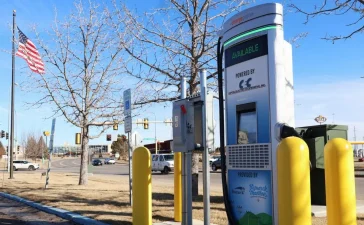Malfunctions in the US government’s system for determining financial aid have left millions of lower income students uncertain about whether they can afford to attend university just weeks before they must decide whether and where to enrol.
Nearly 400 schools — including high-profile state universities such as UCLA, Wisconsin and William & Mary — have been forced to delay their traditional May 1 deadline for students to accept places for the upcoming academic year to enable families to have the financial aid information to hand when making their decision.
But several elite private schools, including Harvard, Yale and Princeton, have so far stuck by their May 1 deadlines, while being forced to switch to alternative methods of assessing financial aid to students to offset tuition and housing expenses that can top $80,000 a year.
The delays raise fears that lower income students could abandon higher education, threatening the survival of the colleges that serve them.
“This is overwhelming,” said Patricia McGuire, president of Trinity Washington University, which recruits primarily minority and low income students. “If our already fragile students and families think there will be an interruption in aid, they will walk away.”
The breakdown centres on the US Department of Education’s primary evaluation system that feeds data on applicants’ financial needs to American universities, called the Free Application for Federal Student Aid (FAFSA) service.
Changes designed to simplify FAFSA and provide greater financial support instead led to a series of delays in the launch of the new online system, errors in calculations, suspicions over questions about undocumented parents and the need for parents and their children to answer together.
Financial aid packages have become an increasingly important metric for US students deciding on which university to attend as average nominal costs for a four-year education at Ivy League and other elite schools has approached $350,000.
Luke Skurman, founder of Niche, which helps students receive admissions offers including financial aid direct from colleges, said rising costs had led to about 70 per cent of American families relying on financial aid packages to help decide which university to attend.
“This is a serious and unfortunate situation that is impacting the majority of families and colleges right now,” Skurman said. “That means a lot of families aren’t committing to a college because they lack clarity on the total cost and the level of assistance they’ll receive.”
The US Department of Education said almost 4mn students — from about 18mn who apply each year — had already “successfully submitted” applications, and that it was streamlining its procedures and providing funding and support from officials to help under-resourced colleges to handle the additional work. The department replied to a request for comment with copies of its recent press releases.
Andrew Flagel, president of the Consortium of Universities of the Washington Metropolitan Area, said “every part” of the process of submitting and calculating financial aid had been delayed. “The goal was admirable: to make FAFSA easier and free up more dollars for students. To throw this incredible monkey wrench in means we have no idea of the impact on student enrolment, and makes it very very difficult to provide service to students as they are preparing to come in.”
The setbacks have highlighted the skyrocketing costs and labyrinthine complexity of the US higher education system, with applicants struggling to understand the discounts, scholarships and subsidised loans available.
Nominal fees at elite institutions exceed $80,000 a year, while the actual average annual cost for students across all US colleges was $36,436 each in 2023, according to the non-profit Education Data Initiative. It estimated the average federal student loan debt at $37,338, and said after interest and loss of income, “the ultimate cost of a bachelors degree can exceed $500,000”.
Plans by the Biden administration to waive $400bn in student debt have been blocked by the Supreme Court, but it has so far offered write-offs estimated at $138bn.
“This is seismic,” said Angel Pérez, chief executive of the National Association for College Admission Counseling. “Many counsellors tell me students are saying it’s so complicated, they will not apply. The minute a student drops out, they don’t return.”
The FAFSA system normally operates on a rolling basis from October, allowing prospective and existing students and their families each year to submit financial information. It generates a Student Aid Index that allows colleges to calculate their assistance packages and the net charges.
That allows students months to visit colleges, weigh the different offers and make a final decision — and often put down a cash deposit — by the normal May 1 national enrolment deadline. That in turn gives time for colleges to calculate class sizes and plan budgets and logistics for teaching, accommodation and other services.
In the current cycle, the system began operating only on December 31 with numerous glitches and colleges say they have yet to receive any information on which to make offers.
Gabrielle Moore, a first year student at Howard University, a historically Black college in Washington, DC, who is facing $30,000 in costs after aid annually, said she had still not been able to complete the online form to clarify her aid for the coming academic year.
“It’s been very stressful,” said Moore.










